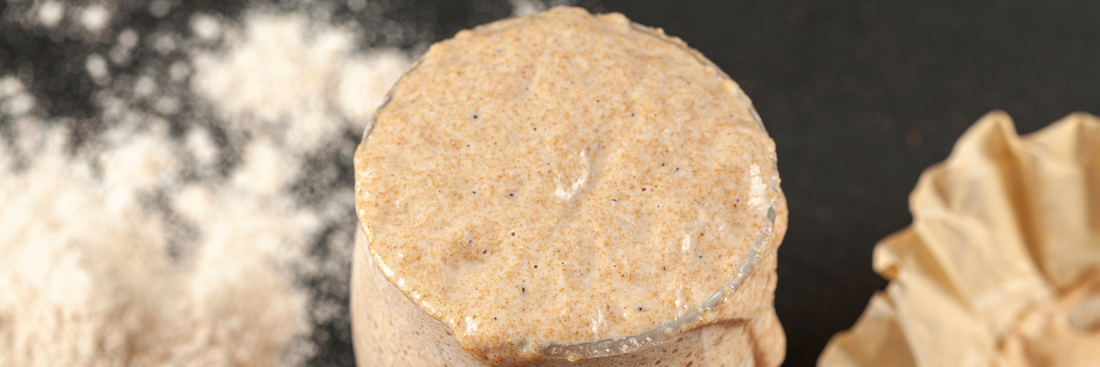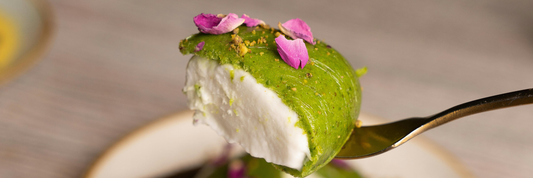A healthy sourdough starter smell can tell you a lot about the balance of yeast and bacteria living inside your jar. From fruity and yeasty to tangy and yogurt-like, most aromas are perfectly normal signs of fermentation. But strong vinegar, alcohol, or rotten odors can signal that your starter needs attention or that it’s time to start over. Understanding what each sourdough starter smell means helps you keep your culture active, safe, and ready for baking.
- Feeding Sourdough Starter the Right Way: Beginner’s Complete Guide
- How to Store Sourdough Starter the Right Way: Tips for Fresh, Active Starters
Common Sourdough Starter Smells and What Each One Means
Sourdough starter smells like mild sour, fruity, or yeasty smell
This is the most common and healthy aroma. It comes from a balanced mix of lactic acid bacteria and wild yeast working together. A starter with this smell is active, stable, and ready to use for baking.
Sourdough smells like yogurt-like or creamy smell
A creamy, tangy scent similar to yogurt signals that lactic acid bacteria are dominating. This is desirable and indicates your starter is producing lactic acid, which contributes to mild sourness and balanced flavor in bread.
Sourdough smells like vinegar or sharp sour smell
A stronger, more pungent vinegar-like odor means acetic acid is building up. This often happens if the starter is hungry, left too long between feedings, or kept in a cooler environment. The fix is simple: feed more consistently to rebalance the culture.
Sourdough smells like alcohol, beer, or nail polish remover (acetone) smell
If your starter smells boozy or like nail polish remover, it is producing excess alcohol and acetone byproducts due to underfeeding. While not unsafe, this is a clear sign your starter needs more frequent or higher-ratio feedings to restore balance.
Sourdough starter smells like cheese
If your sourdough starter smells like cheese, it’s usually a normal stage in its development. The cheesy smell comes from lactic acid bacteria, which produce mild, tangy aromas similar to yogurt or cheese. This indicates active fermentation and healthy bacterial growth. However, if the smell becomes strongly rotten or moldy, it may be a sign of imbalance, and the starter might need a feeding refresh or a partial restart.
Sourdough starter smells like sour milk
If your sourdough starter smells like sour milk, it’s usually a sign of lactic acid bacteria doing their job. This sour, tangy scent is normal, especially in the early stages of fermentation, and shows your starter is developing acidity. However, if the smell turns rancid or putrid, it could mean the starter is underfed or contaminated — discard the top layer and give it a few regular feedings to restore balance.
Sourdough starter smells like rotten, putrid, or foul smell
A truly unpleasant odor like rotten eggs, decay, or sewage, suggests contamination or a bacterial takeover. This is a red flag. In such cases, it’s safest to discard the starter and begin fresh.
Fruity, estery, or floral notes
Sometimes a starter develops sweeter, fruity, or even floral aromas. These esters are byproducts of healthy fermentation and are generally harmless. Many bakers enjoy this complexity as it can add depth to bread flavor.
How to Revive Sourdough Starter Step by Step (No Waste Guide)
Can You Freeze Sourdough Starter? 3 Easy Methods That Work

|
Smell
|
What it means
|
What to do
|
|---|---|---|
|
Pleasant, Tangy, Yogurt-like
|
This is a good sign, indicating healthy fermentation and a good balance of bacteria.
|
Continue as usual.
|
|
Ripe, sweet, fresh fruit (banana, apple, melon)
|
Normal and desirable, especially as it approaches peak fermentation.
|
Continue as usual.
|
|
Floury and mildly sweet
|
Recently fed and starting to rise, a normal and healthy sign.
|
Continue as usual.
|
|
Beer or wine-like
|
The starter is getting hungry, or it has passed its peak and is starting to fall.
|
Feed your starter.
|
|
Acetone or nail polish remover
|
The starter is very hungry and has been left unfed for too long. It may need more frequent feeding or a larger feeding ratio.
|
Feed immediately.
|
|
Cider vinegar
|
A common smell indicating acidity, especially if the starter has been fermenting for a while.
|
Feed your starter to reduce acidity.
|
|
"Vomit" or "wet dog" or "old socks"
|
Can be a sign of an issue or just the result of certain flours or temperature. It's not a good smell, but it's not necessarily mold.
|
Try feeding it more often or discarding and starting over.
|
|
Rotten eggs or sulfur
|
Could be a sign of a bacterial imbalance.
|
Discard the starter.
|
|
Moldy or musty
|
A definite sign of spoilage, often accompanied by mold.
|
Discard the starter.
|
Quick Fixes for Common Bad Smells
If it smells like acetone or alcohol
This means your starter is underfed and producing excess alcohol and acetone. To fix it:
-
Feed more often (don’t let it go too long unfed).
-
Reduce the amount of old starter you keep before feeding (lower retention).
-
Increase the refreshment ratio (for example, 1:5:5 instead of 1:1:1).
-
Keep the starter in a slightly cooler environment to slow stress fermentation.

If it smells vinegary
A sharp, vinegar-like smell indicates acetic acid buildup from an imbalanced fermentation. Try:
-
Feeding more frequently to keep microbes in balance.
-
Using warmer fermentation conditions to encourage lactic acid bacteria over acetic acid.
-
Adjusting your refresh ratio to keep the culture from getting too hungry.

If it smells off but has no mold or discoloration
Sometimes starters smell odd but show no visual contamination. In this case:
-
Refresh the starter several times in a row using whole-grain flour (rye or whole wheat) to boost microbial diversity and activity.
-
Keep feedings consistent until the smell stabilizes.
-
If no improvement after several days, consider starting over.
Preventing Off Smells: Best Maintenance Practices
To avoid unpleasant odors in your sourdough starter, follow these practices:
-
Stick to a regular feeding schedule based on your baking routine.
-
Always use non-chlorinated water (chlorine can weaken yeast and bacteria).
-
Maintain clean jar hygiene—rinse jars regularly and avoid crusty buildup.
-
Keep hydration consistent (commonly 100% hydration, equal parts flour and water by weight).
-
Store at the right temperature: around 70–75°F (21–24°C) for balance.
Smell Troubleshooting Flowchart (Diagnostic Steps)
-
Check appearance – Is there mold, pink/orange spots, or unusual growth?
-
Yes → Discard and restart.
-
No → Continue.
-
-
Smell classification – Alcohol/acetone? Vinegar? Rotten? Fruity/yeasty?
-
Hooch present? – If yes, feed starter and adjust schedule.
-
Discoloration or mold? – If yes, discard.
-
Persistent smell issues? – Try reviving with repeated whole-grain feedings.
-
Still no recovery? – Safest option is to start a new starter.
FAQs About Sourdough Starter Smell
Does sourdough starter smell like vomit?
A sourdough starter can smell like vomit if it’s producing too much butyric acid, usually from early fermentation or contamination. The smell should fade as the starter matures and balances — if it doesn’t, it’s best to discard and start over.
What does bad sourdough starter smell like?
A bad sourdough starter usually smells like rotten cheese, mold, or something putrid and unpleasant, instead of the clean sour, yeasty aroma it should have.
Why does my sourdough starter smell like nail polish remover?
Usually acetone from alcohol build-up due to underfeeding; feed more and adjust ratios.
Is hooch bad for sourdough starter?
No, it is a sign of hunger; pour off or stir in and feed
Why does my starter smell like vinegar?
Acetic acid from bacterial activity when starter is stressed or underfed; increase feed frequency.
Can you save a starter that smells bad?
If there is no mold or discoloration, repeated feedings and whole-grain boosts can often revive it; otherwise discard.
Conclusion
The sourdough starter smell is one of the most reliable indicators of its health. Mild, tangy, or fruity aromas show a thriving culture, while sharp vinegar or alcohol notes suggest your starter is hungry. Foul or rotten smells are red flags for contamination and should not be ignored. By learning to recognize these smells and applying simple fixes, you can maintain a strong starter that produces delicious, reliable bread for years to come.







